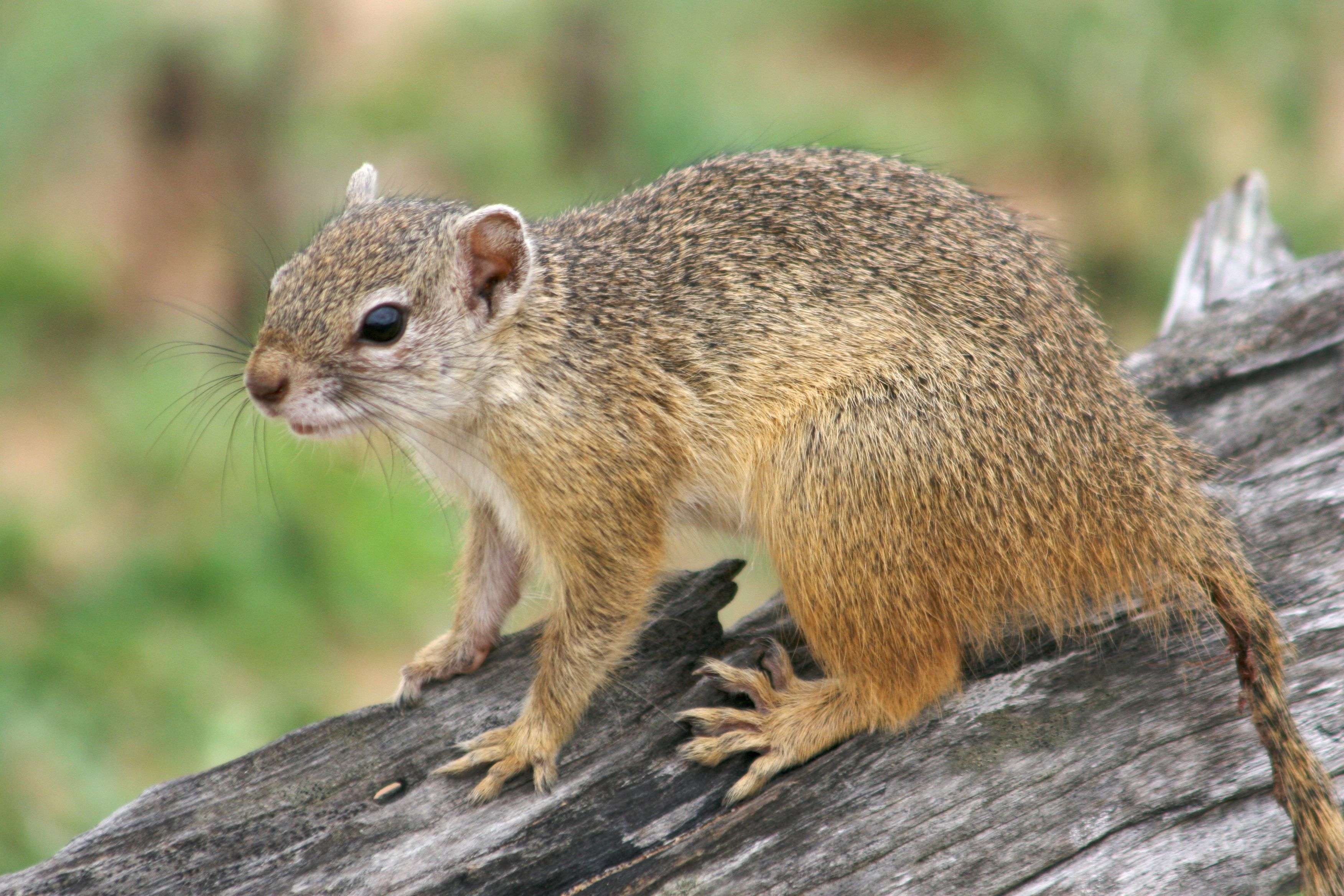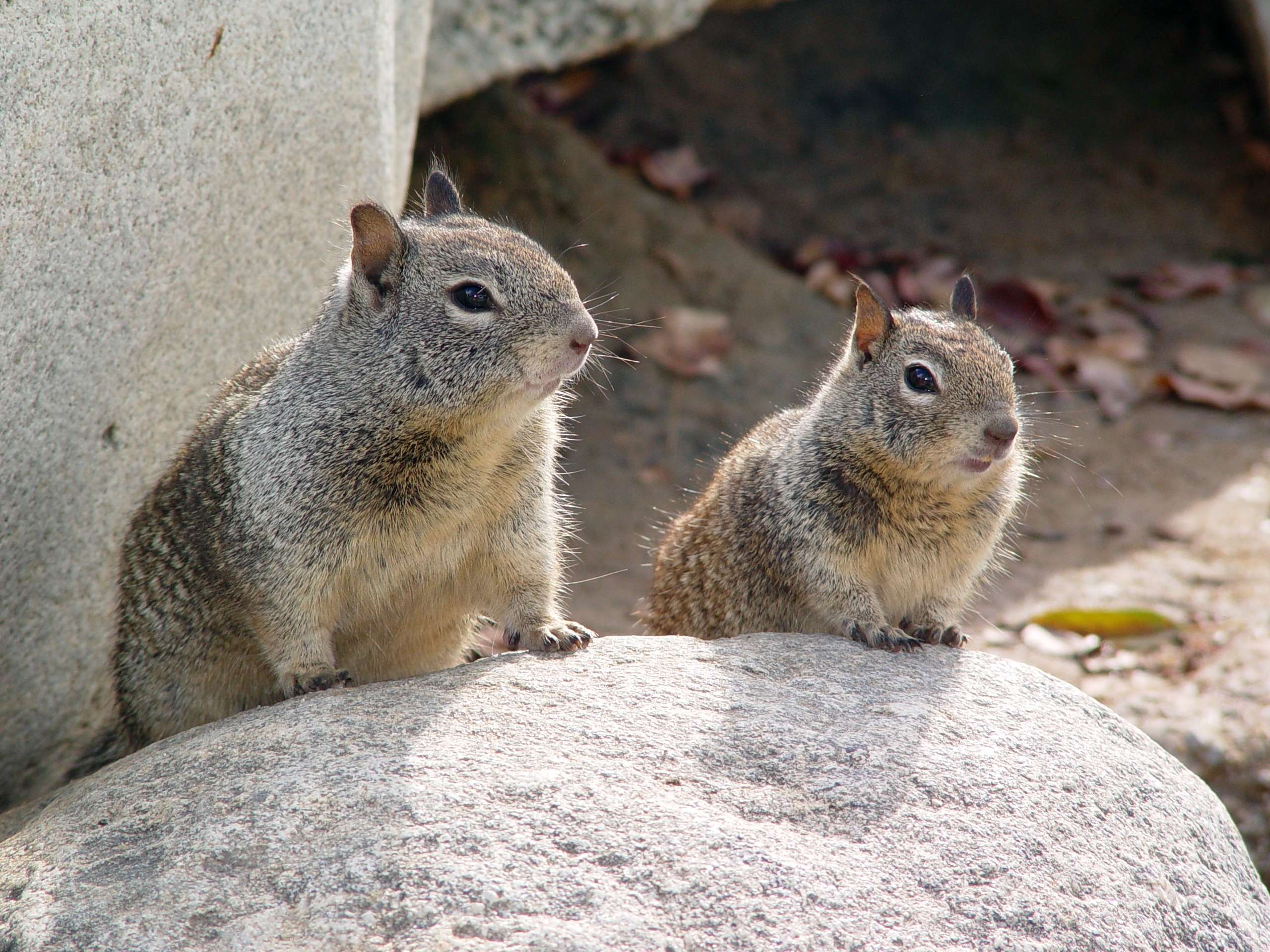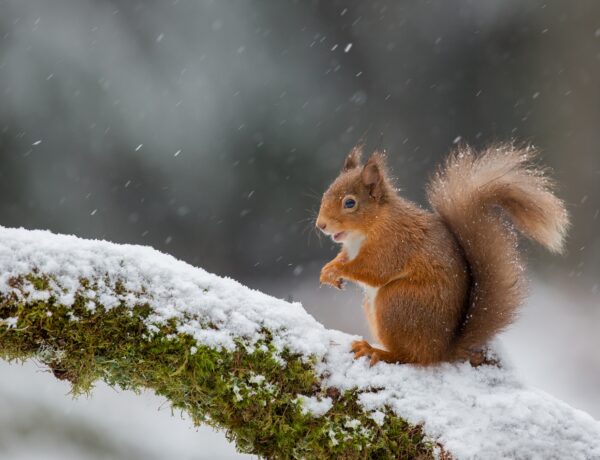Introduction
What Is A Ground Squirrel: A ground squirrel, often overlooked in the grand tapestry of the animal kingdom, is a remarkable creature that plays a vital role in its ecosystem. These small, terrestrial rodents belong to the family Sciuridae, a diverse group that also includes tree squirrels chipmunks and prairie dogs. Despite their diminutive size, ground squirrels exhibit a fascinating array of behaviors, adaptations, and ecological significance that make them a subject of intrigue for scientists and nature enthusiasts alike. Ground squirrels are typically small to medium-sized rodents, with body lengths ranging from 5 to 12 inches, depending on the species. They are known for their compact bodies, short legs, and bushy tails, which they use for various purposes, including balance and communication.
One of their distinguishing features is their keen sense of vision, which aids in detecting predators and locating food sources. These rodents are primarily terrestrial, hence the name “ground squirrel.” Unlike their tree-dwelling counterparts, ground squirrels are predominantly found in open grasslands, deserts, and other terrestrial habitats. They are known for their burrowing behavior, creating intricate tunnel systems beneath the earth’s surface. These burrows serve as both shelter and protection from predators and extreme weather conditions, showcasing the ground squirrel’s remarkable engineering skills.
Ground squirrels omnivorous creatures with a diverse diet that includes seeds, nuts, fruits, insects, and even small vertebrates. Their adaptability in finding food sources contributes to their resilience in various environments. Moreover, their foraging activities have a substantial impact on seed dispersal and plant regeneration, making them essential players in maintaining ecosystem health. Beyond their ecological significance, ground squirrels also exhibit intriguing social behaviors. Some species are known for their colonial living arrangements, where numerous individuals share burrow systems and cooperate in sentinel duties to alert the group of approaching threats.

What is a ground squirrel called?
Ground squirrels – often referred to as ‘groundhogs’ or ‘gophers’ – are notorious for standing tall on their hind legs to detect potential threats. With so many genera and species of ground squirrel, they vary significantly in size. Marmots are the heaviest squirrels, weighing up to 18 lb (8 kg).
Ground squirrels are rodents in the Sciuridae family. Many members of this group are called ground squirrels, but some are also known as marmots, prairie dogs and chipmunks. These rodents live mostly on the ground, although they can climb when necessary. They are expert diggers, adept at burrowing.
Prairie Dogs: Prairie dogs are a type of ground squirrel native to North America. They are often referred to by their common name, “prairie dogs,” which is derived from their barking vocalizations that sound similar to a dog’s bark. Prairie dogs are highly social animals and are known for their extensive burrow systems.
California Ground Squirrel: This ground squirrel species is found in the western United States, primarily in California. They are sometimes simply called “California ground squirrels” due to their regional distribution.
Arctic Ground Squirrel: As the name suggests, the Arctic ground squirrel inhabits the northern regions of North America. They are well-adapted to cold climates and are sometimes called “Arctic ground squirrels” or “sik-siks,” a name derived from the sound of their alarm calls.
Thirteen-Lined Ground Squirrel: Found in the central and northern United States, the thirteen-lined ground squirrel gets its name from the thirteen distinct stripes running down its back. It is also known as the “striped gopher” or simply “thirteen-lined squirrel.”
Where are ground squirrels?
Habitat. Open areas including rocky outcrops, fields, pastures, and sparsely wooded hillsides comprise their habitat. Ground squirrels also live in grassy areas such as pastures, golf courses, cemeteries, and parks.
Ground squirrels prefer open grasslands and are usually found in grain fields, irrigated pastures, meadows and around residential and commercial buildings. Ground squirrels live in underground burrows where they sleep, rest, store food and raise their young.
Prairie dogs, a type of ground squirrel, are primarily found in the central and western parts of North America, particularly in the Great Plains and western states such as Colorado, New Mexico, and Montana. These ground squirrels are native to the western United States, with a significant population in California.
As the name suggests, Arctic ground squirrels inhabit the northern regions of North America, including Alaska and parts of Canada. European ground squirrels are found in various European countries, including Russia, Ukraine, Hungary, and Bulgaria. They are known as “sousliks” in some regions. Various species of ground squirrels are found throughout Asia. They are distributed across countries such as China, Mongolia, Kazakhstan, and parts of Russia.
This species is native to the Himalayan region and is found in countries like India, Nepal, and Bhutan. These ground squirrels are native to North Africa, particularly in Morocco and parts of Algeria and Tunisia. Ground squirrels are not as common in South America as they are in other continents. Some small, burrowing rodents found in South America may be colloquially referred to as “ground squirrels,” but they belong to different genera and families.
What’s the difference between a ground squirrel and a chipmunk?
What is the difference between a chipmunk and a squirrel? Chipmunks are small mammals with distinct stripes, while the tree squirrel is larger and doesn’t have stripes. The ground squirrel has body stripes like chipmunks, but no head stripes. A tree squirrel is larger, has a longer tail and no stripes.
The most telltale difference between the two is the presence of stripes on their heads, or lack thereof. While both are striped, only 13-lined ground squirrels have stripes that extend to their heads. Only the bodies of eastern chipmunks are striped. Their stripe pattern can also be used to differentiate them.
Ground squirrels typically have a more slender and elongated body compared to chipmunks. They have short legs and a bushy tail, which they use for balance and communication. Ground squirrels are usually shades of brown or gray with some variations in coloration depending on the species.
Chipmunks are smaller in size and have a more compact body shape. They are known for their distinctive stripes that run along their back, from head to tail. Chipmunks have a striped facial pattern, with alternating light and dark stripes, and their cheeks have pouches for storing food.
Most ground squirrel species do not have the prominent stripes found in chipmunks. They have a more uniform coloration on their bodies without distinct facial markings or dorsal stripes. Chipmunks are easily recognizable by their stripes. They typically have three dark stripes and two white stripes running down their back, which helps distinguish them from other small rodents.
What do ground squirrels eat?
Ground squirrels are primarily herbivorous, and their diet changes with the season. After emerging from hibernation, they feed almost exclusively on green grasses and herbaceous plants. When annual plants begin to dry and produce seed, squirrels switch to seeds, grains, and nuts, and begin to store food.
Ground squirrels are avid seed eaters. They forage for seeds from various plants, including grasses, wildflowers, and shrubs. Their seed consumption plays a crucial role in seed dispersal and plant regeneration in their ecosystems. Some ground squirrel species, such as the California ground squirrel, feed on nuts like acorns and pine nuts when they are available.
Ground squirrels include fruits in their diet when they are in season. They may consume berries, fruits, and other fleshy plant parts. Ground squirrels may eat leaves, stems, and tender shoots of various plants, especially during the growing season. This can include grasses, herbs, and woody vegetation. Some ground squirrel species, like the Columbian ground squirrel, consume fungi when it’s accessible.
Ground squirrels are not strictly herbivores; they occasionally include insects in their diet. They may hunt for insects such as grasshoppers, beetles, and caterpillars. They may also feed on earthworms, insect larvae, and other small invertebrates when the opportunity arises. In ground squirrels are known to scavenge on carrion. They may consume dead animals, bird eggs, or other small vertebrates.
Do ground squirrels move?
Ground squirrels rarely venture more than fifty feet from their burrow openings. On the other hand, tree squirrels move farther from their nests because they can travel in trees, safe from most predators. They live in tree cavities or nests made of twigs, leaves, and bark.
They will travel 100 yards or more to feed in adjacent crops. When uncontrolled, they frequently move into perennial crops, such as orchards and vineyards, and dig burrows beneath the trees or vines. The California ground squirrel can be active throughout the year in coastal areas of Southern California.
Ground squirrels are diurnal, which means they are primarily active during the daytime. They leave their burrows to search for food, and their foraging movements can cover a considerable area. They are known for their rapid and agile movements as they scurry across open ground in search of seeds, nuts, plants, and insects.
Ground squirrels are adept diggers and create intricate burrow systems for shelter, protection, and raising their young. They use their strong front limbs and claws to excavate tunnels and chambers beneath the ground. These burrows can extend several meters in length and may include multiple entrances and exits. Some ground squirrel species, like prairie dogs, are highly social and live in large colonies with numerous individuals.
In these colonies, they exhibit communal behaviors, including sentinel duties, where individuals take turns keeping watch for predators. Ground squirrels are known for their ability to hibernate during the winter months in colder regions. During hibernation, their movements and metabolic rate significantly decrease to conserve energy.
Is a ground squirrel a rat?
A squirrel is a small mammal and is part of the Sciuridae family. They are also part of the scientific order Rodentia. These tree-scaling animals are medium-sized rodents in a family that also includes chipmunks, marmots, prairie dogs, flying squirrels, ground squirrels and tree squirrels.
Ground squirrels belong to the family Sciuridae, which is a diverse group of rodents that also includes tree squirrels, chipmunks, and prairie dogs. They are more closely related to other squirrels than to rats. Rats belong to the family Muridae, a different family from that of squirrels. Common rats, such as the brown rat and the black rat are in the genus Rattus.
Ground squirrels are characterized by their compact bodies, short legs, and bushy tails. They typically have fur that is brown, gray, or a combination of these colors. Rats have a slender, elongated body with long tails that lack bushiness. They often have fur that ranges from brown to gray, but it can vary depending on the species. Ground squirrels have relatively short, furry tails that they use for balance and communication.
Rats have long, scaly tails that are longer than their bodies. As the name suggests, ground squirrels are primarily terrestrial and are commonly found in open grasslands, meadows, deserts, and similar terrestrial habitats. They are skilled burrowers. Rats are highly adaptable and can thrive in a wide range of environments, including urban areas, sewers, buildings, and ships. They are not exclusive to terrestrial habitats.
What’s a baby squirrel look like?
“A newborn squirrel is born pink and hairless. Within the first week, the skin appears to turn gray, which is the fur beginning to develop under the skin. Usually the first hair is their whiskers. The ears will open the third week of life.
Depending on their age, infant squirrels may have a short, thin coat of fur or no fur yet at all (see pictures below). They have a thin tail (not bushy) and their eyes may be closed or may have just opened. If you have found an infant squirrel, its best chance for survival is to be reunited with its mother.
Newborn baby squirrels are incredibly tiny, typically measuring only a few inches in length. Their weight varies depending on the species but is usually less than an ounce (about 28 grams) at birth. Newborn squirrel pups are born hairless (naked) and are often pink or slightly reddish in color. Their skin is delicate and may appear translucent.
Baby squirrels are born with their eyes and ears closed. They are unable to see or hear during the first few weeks of their lives. Their eyes remain sealed shut for about three to four weeks. The skin of newborn squirrels may appear wrinkled, and they have a somewhat flattened appearance due to their lack of fur.
On their belly, you may notice faint lines or ridges known as “milk lines,” which are areas where the mammary glands of the mother squirrel are located. These are more noticeable in some squirrel species than others. As they grow, baby squirrels gradually develop a soft, fine fur that begins to cover their bodies. The fur typically starts growing around one to two weeks of age.
After about three to four weeks, the eyes of baby squirrels begin to open, revealing dark, beady eyes. Their ears also start to become more prominent. Baby squirrels, like adult squirrels, have sharp incisor teeth that are used for gnawing and cutting food. These teeth start to emerge shortly after their eyes open.
What is a female squirrel called?
Female squirrels, called sows, may produce 2 litters of young per year if food is plentiful and other factors are not too adverse. Litter size can vary from 1 to 6 young, but is usually between 2 and 4.
Reproductive Terminology: When discussing the reproductive aspects of female squirrels, terms like “sow” or “dam” are not commonly used for females as they are in some other animal species. Instead, “female squirrel” is the standard term.
Mating and Offspring: Female squirrels play a crucial role in the reproduction and care of their young. They are responsible for giving birth to and raising the squirrel pups, which are the offspring of both male and female squirrels.
Social Structure: Some squirrel species, like tree squirrels and ground squirrels, may exhibit social behaviors where multiple individuals, including both males and females, live in close proximity within a colony or group. In the distinctions between males and females are based on their reproductive roles rather than their naming conventions.

Conclusion
In ground squirrels is a captivating and often-underappreciated realm within the animal kingdom. These small, terrestrial rodents, belonging to the family Sciuridae, exhibit a range of remarkable characteristics and behaviors that make them a subject of great interest to scientists, naturalists, and wildlife enthusiasts. One of the key features that define ground squirrels is their ability to adapt to various terrestrial habitats, from open grasslands to arid deserts. Their compact bodies, short legs, and keen sense of vision enable them to thrive in these environments, where they play crucial roles in maintaining ecosystem health.
Ground squirrels are omnivorous and have a diverse diet, contributing to seed dispersal, plant regeneration, and the overall biodiversity of their habitats. Burrowing is a hallmark behavior of ground squirrels, and their intricate tunnel systems serve as both shelter and protection from predators and harsh weather conditions. Their ability to engineer these burrows showcases their remarkable squirrels radiation adaptability and resourcefulness. Social behavior among ground squirrels is also noteworthy, particularly in species that live in colonies. Cooperative sentinel duties, where individuals take turns keeping watch for predators, insights into the dynamics of group living and cooperation in the animal world.
Studying ground squirrels in their natural habitat offers valuable lessons about social structures and adaptations. Ground squirrels are essential components of food chains and ecological interactions. They are prey for a variety of predators, including birds of prey, snakes, and mammals, contributing to the overall balance of ecosystems. In the grander scheme of conservation, understanding ground squirrels is critical for preserving biodiversity and maintaining healthy ecosystems. Their roles as seed dispersers, insect predators, and ecological engineers underscore their significance.





No Comments